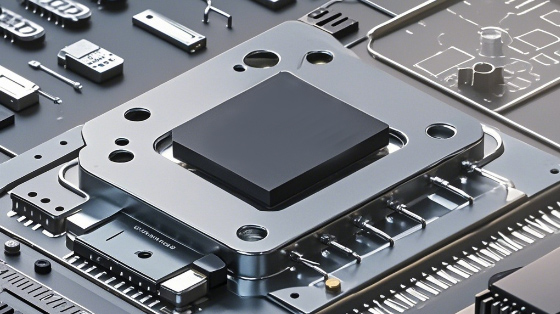The Marvels of Electronic Components: Powering the Digital Age
2024/10/25 11:21:06
In today's highly technological world, electronic components play a crucial role in powering a vast array of devices and systems that have become an integral part of our daily lives. From the smartphones in our pockets to the complex computer networks that drive global businesses, electronic components are the unsung heroes behind the scenes.
Electronic components can be broadly classified into several categories. Resistors, capacitors, and inductors are some of the fundamental passive components. Resistors are used to control the flow of electric current by providing a specific amount of resistance. Capacitors, on the other hand, store and release electrical energy, while inductors store energy in a magnetic field.

Active components, such as transistors and integrated circuits (ICs), are essential for amplifying, switching, and processing electrical signals. Transistors, which were a revolutionary invention, have transformed the field of electronics by enabling the miniaturization and increased functionality of electronic devices. Integrated circuits, also known as microchips, are made up of millions or even billions of transistors and other components integrated onto a single silicon chip. They have revolutionized the electronics industry by providing high-performance computing power in a small package.
One of the key characteristics of electronic components is their miniaturization. As technology has advanced, electronic components have become smaller and more powerful. This miniaturization has led to the development of smaller and more portable electronic devices, such as smartphones, tablets, and wearable technology. For example, the latest smartphones contain a vast array of electronic components, including processors, memory chips, sensors, and display drivers, all packed into a small form factor.
Another important aspect of electronic components is their reliability. In many applications, such as aerospace, medical devices, and automotive electronics, electronic components must operate reliably under extreme conditions. This requires the use of high-quality materials and manufacturing processes to ensure that the components can withstand temperature variations, vibration, and other environmental stresses.
The development of new electronic components is also driven by the need for increased performance and functionality. For example, the demand for faster processors, larger memory capacity, and better battery life in smartphones and other portable devices has led to the development of advanced semiconductor technologies. Similarly, the growth of the Internet of Things (IoT) has created a need for low-power, wirelessly connected electronic components that can operate for long periods on small batteries.
In addition to their use in consumer electronics, electronic components are also essential in industrial applications. In factories and manufacturing plants, electronic components are used in automated production systems, robotics, and process control equipment. They enable precise control and monitoring of industrial processes, improving productivity and quality. In the energy sector, electronic components are used in power generation, transmission, and distribution systems to ensure efficient and reliable operation.
The field of electronic components is constantly evolving, with new materials and technologies being developed to meet the growing demands of the digital age. For example, the emergence of flexible electronics and printed electronics is opening up new possibilities for the design and manufacturing of electronic devices. Flexible electronics can be bent, folded, and stretched, making them suitable for applications such as wearable technology and flexible displays. Printed electronics, on the other hand, uses printing techniques to create electronic components on various substrates, offering cost-effective and scalable manufacturing solutions.
Another area of research and development in electronic components is the field of nanotechnology. Nanotechnology involves the manipulation of matter at the nanoscale, and it holds great promise for the development of smaller, more powerful, and more efficient electronic components. For example, nanoscale transistors and memory devices could potentially offer significant improvements in performance and power consumption compared to traditional silicon-based components.
In conclusion, electronic components are the building blocks of the digital age. They play a crucial role in powering a wide range of devices and systems, from consumer electronics to industrial applications. As technology continues to advance, the demand for more advanced and reliable electronic components will only increase. With ongoing research and development in areas such as miniaturization, reliability, performance, and new materials, the future of electronic components looks bright. They will continue to drive innovation and enable new applications that will shape our lives in the years to come.
Related Information

- 2025.03.14 Who Are Intel's Main Competitors?

- 2025.03.13 recent chip - related news 2025


